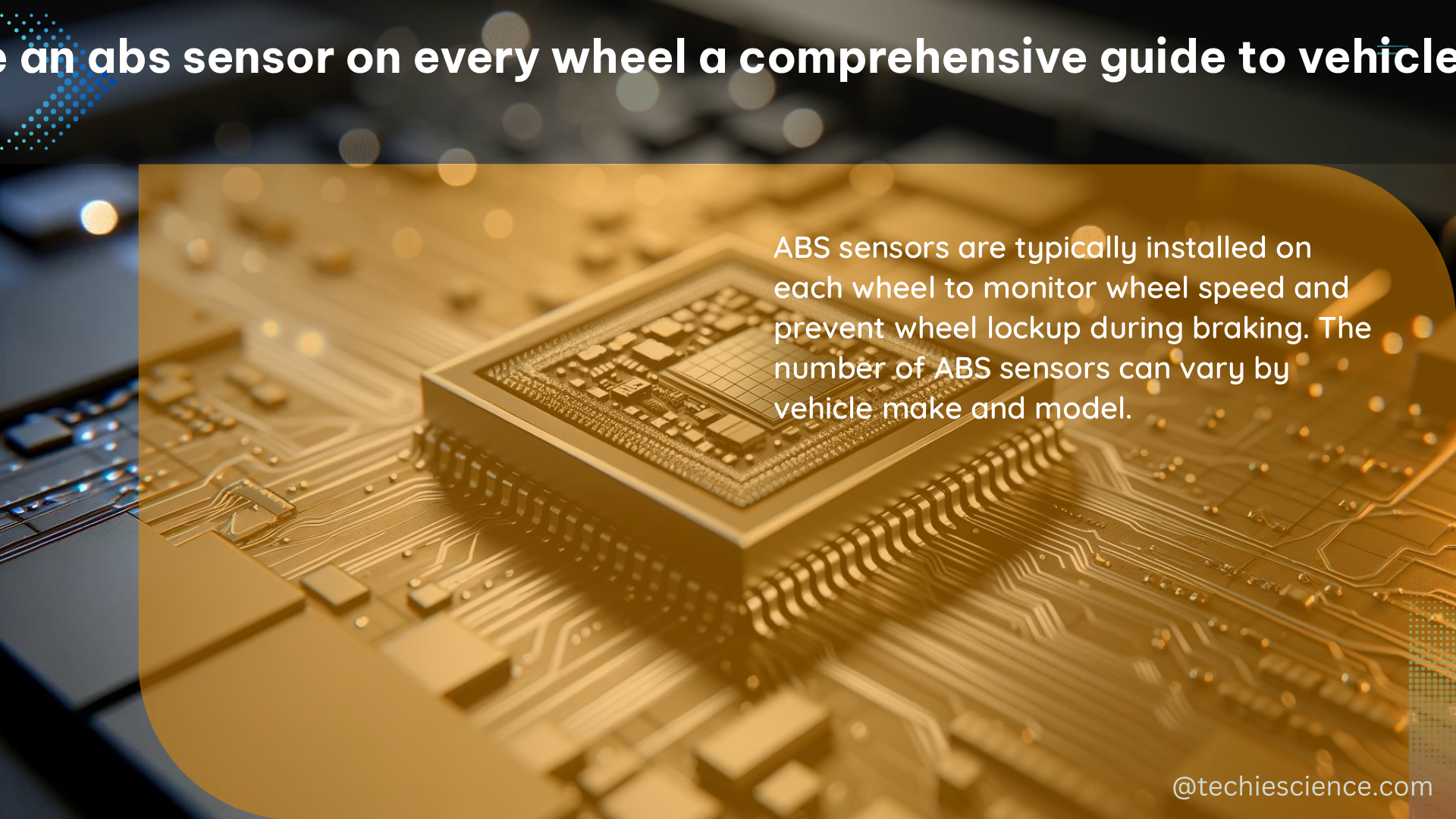Modern vehicles are equipped with advanced safety systems that rely on a network of sensors, including the Anti-lock Braking System (ABS) sensors. These sensors play a crucial role in monitoring the speed and rotation of each wheel, providing essential data to the vehicle’s Electronic Control Unit (ECU) for enhanced safety and performance. In this comprehensive guide, we will delve into the details of ABS sensors, their technical specifications, and their impact on overall vehicle safety.
Understanding ABS Sensors
ABS sensors, also known as wheel speed sensors, are present on every wheel of a modern vehicle. These sensors are typically located in the hub assembly, positioned to monitor the reluctor ring, a timing ring with multiple toothed gears mounted on the rotary portion of the hub. As the wheels spin, the teeth of the reluctor ring pass by the wheel speed sensor, which detects the pattern and speed of the teeth’s movement.
The sensor converts this information into electrical signals, which are then transmitted to the ECU. The ECU uses this data to determine the direction and speed of each wheel’s rotation, a critical factor in the operation of the Anti-lock Braking System (ABS) and other safety systems.
Technical Specifications of ABS Sensors

The technical specifications of ABS sensors can vary depending on the manufacturer and the vehicle model. However, there are some common characteristics that are essential to understand:
-
Sensor Type: ABS sensors can be either active or passive. Active sensors use a Hall-effect or magnetoresistive principle to generate an electrical signal, while passive sensors rely on the electromagnetic induction principle.
-
Output Format: ABS sensors can have different output formats, such as a current pulse (e.g., 7mA to 14mA) or a voltage signal (e.g., 0.5V to 4.5V).
-
Voltage Tolerance: ABS sensors are designed to withstand voltage transients and spikes, with some models rated for up to +27V.
-
Packaging: ABS sensors are typically housed in a single-in-line (SIP) package, suitable for mounting with a back-biasing magnet in the wheel speed sensor assembly.
-
Resistance: The resistance of ABS sensors can vary, with some models having a resistance range of 1 kΩ to 2 kΩ.
-
Operating Temperature: ABS sensors are designed to operate within a specific temperature range, often between -40°C to +125°C.
-
Vibration Resistance: These sensors must be able to withstand the vibrations and shocks encountered during normal vehicle operation.
The Role of ABS Sensors in Vehicle Safety
ABS sensors play a crucial role in vehicle safety by providing accurate data to the ECU, which in turn, enables the Anti-lock Braking System (ABS) to function effectively. During braking, the speed sensors inform the ABS unit through the ECU about which wheels are locking up or turning slower than others. The ABS then intervenes by quickly pumping the brakes at the locking wheels, allowing them to keep spinning and helping the driver maintain control of the vehicle, preventing dangerous skids.
In addition to ABS, ABS sensors also contribute to the proper functioning of other safety systems, such as Electronic Stability Program (ESP) and traction control. A malfunctioning or failing ABS sensor can cause these systems to malfunction, potentially compromising the vehicle’s overall safety and handling.
Diagnosing ABS Sensor-Related Faults
When diagnosing issues related to ABS sensors, it is crucial to avoid resistance tests on active wheel speed sensors, as this can potentially damage the sensors. Instead, it is recommended to consult the manufacturer’s data to identify the fitted sensor type and perform a continuity check to determine if the sensor is active or passive.
In the event of an ABS sensor-related fault, it is essential to replace the faulty sensor with a compatible unit that meets the vehicle manufacturer’s specifications. Attempting to repair or bypass a faulty ABS sensor can compromise the safety and performance of the vehicle’s braking and stability systems.
Conclusion
ABS sensors are an integral part of modern vehicle safety systems, with one sensor present on each wheel. These sensors play a critical role in monitoring wheel speed and providing essential data to the ECU, enabling the proper functioning of the Anti-lock Braking System and other safety features. Understanding the technical specifications and the importance of ABS sensors in vehicle safety is crucial for maintaining the overall performance and safety of your vehicle.
Reference:
– ABS Speed Sensor Digital
– Making Sense of Your Sensors: ABS Sensor
– AD22157 Data Sheet
– What is a Front Wheel Speed Sensor?

The lambdageeks.com Core SME Team is a group of experienced subject matter experts from diverse scientific and technical fields including Physics, Chemistry, Technology,Electronics & Electrical Engineering, Automotive, Mechanical Engineering. Our team collaborates to create high-quality, well-researched articles on a wide range of science and technology topics for the lambdageeks.com website.
All Our Senior SME are having more than 7 Years of experience in the respective fields . They are either Working Industry Professionals or assocaited With different Universities. Refer Our Authors Page to get to know About our Core SMEs.